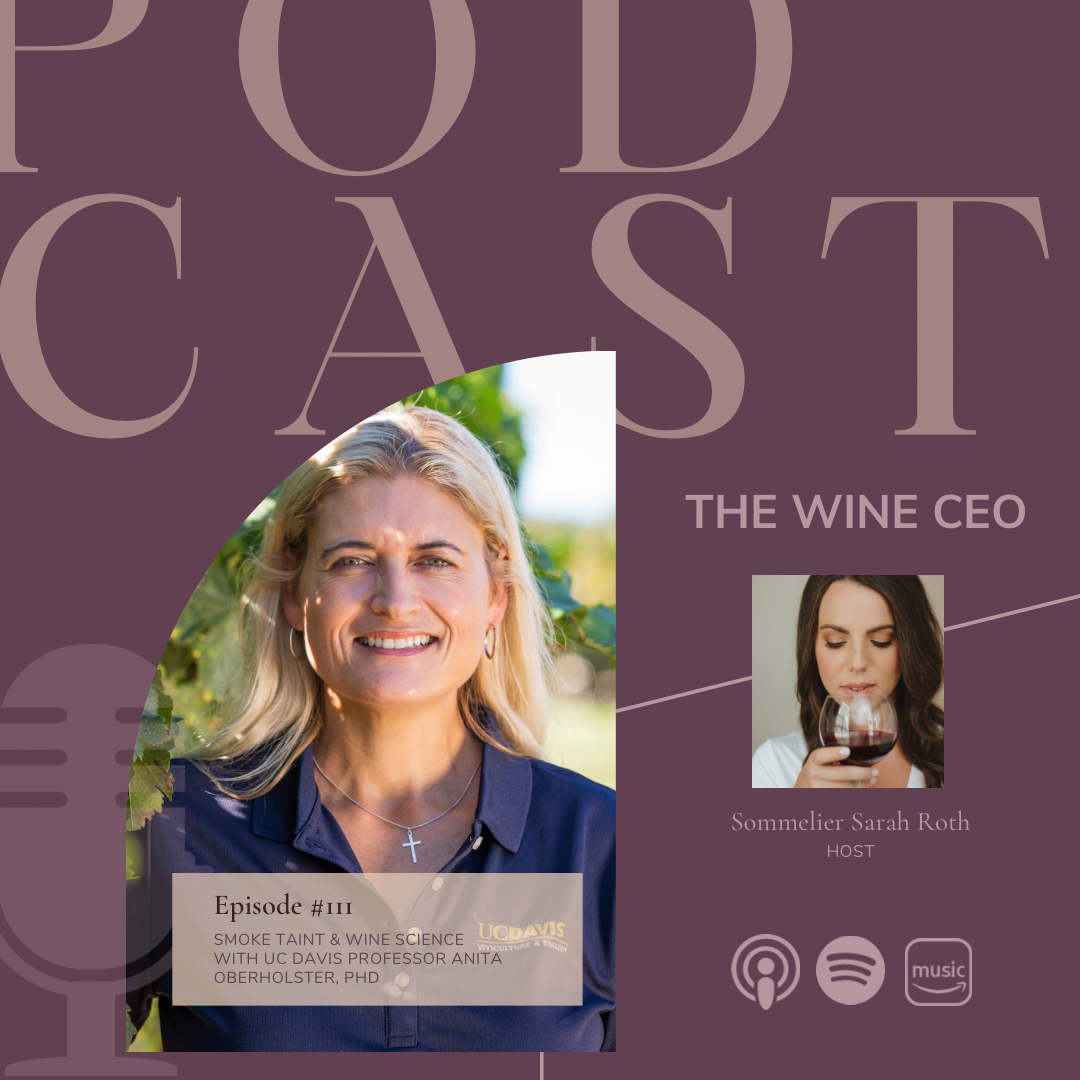Smoke Taint and Wine Science with UC Davis Professor Anita Oberholster, Ph.D.
We’ve seen wildfires impact Northern California over the last few years and many consumers have been led to believe that smoke from these fires will ruin grapes. Many newspapers and magazines have reported that these wildfires are ruining vintages and that wines impacted by “smoke taint” are more common in years with wildfires. But this isn’t exactly correct! In Episode 111 of The Wine CEO Podcast, I had the opportunity to sit down with Dr. Anita Oberholster of the UC Davis Enology Department. Dr. Anita is a renowned professor and researcher who has studied smoke taint and the impact of wildfires on wine grapes. What she shared is incredibly interesting.
Many consumers might be familiar with the Air Quality Index (you can usually find this on the Apple weather app on iPhones) and this is a health measure for air quality for humans. So while this may show detrimental levels of smoke, it doesn’t necessarily mean that these same levels are bad for the grapes. If you see smoke in a vineyard, it doesn’t always mean that it’s bad for all of the grapes and that vintage is ruined. In fact, it’s quite the opposite! Dr. Anita shared that it is very hard to find a wine on the market with true smoke taint because these wines are evaluated well before they ever hit the market and removed from the point of sale.
Winemakers are always looking to provide the best product, so they are closely watching their grapes for any “smoke taint” that might occur from smoke in the vineyards. If winemakers fear that their vineyards may be impacted by smoke, they have two main options. First, they might address this by treating those grapes. Then if the finished wine is still in good shape, they will sell the wine usually at a lower price than if the grapes had not been treated. The second option, which is usually taken by many higher-end wine producers, is to not treat grapes that have been affected by smoke or sell wine that would be made from those grapes. Regardless of which option winemakers choose, consumers can be confident that if they are buying wine from a winery in a region that experiences regular fires, the wine is still of high quality and will not have smoke taint. At the end of the day, these wineries do not want to sell a bad product because that will affect their brand and consumers will not want to purchase wine from them in the future. This is not to say that you cannot pick up flavors of smoke and wine. In fact, many red wines specifically have smoky flavors that are desired aromas from the winemaker. The smokey notes often come from charred barrels that are used during the aging process. But Dr. Anita said that you can definitely taste the difference between a desired smoke flavor and that of smoke taint.
If you want to learn more about smoke taint or other wine science topics, check out Episode 111 of the Wine CEO Podcast where I interview UC Davis Professor Anita Oberholster, Ph.D. and we discuss questions like:
What’s the difference between viticulture and enology?
What does the research about tannins reveal about a connection between tannins and headaches?
Are wines priced at $10, $100, and $1000 really all that different?
How can someone study enology?
Dr. Anita Oberholster is such a brilliant professor and I loved getting to chat about all of these wine-related topics. She is so knowledgeable in the field and she also makes all of these topics really easy to understand. It’s a great episode filled with good information, science, and of course wine! So grab a glass of your current favorite wine and press play. Cheers!

